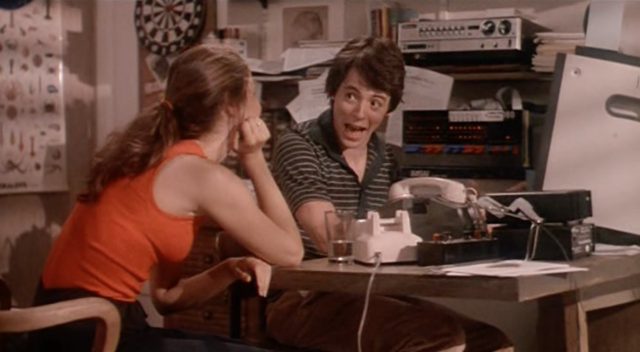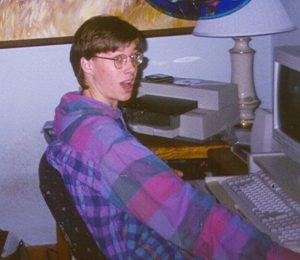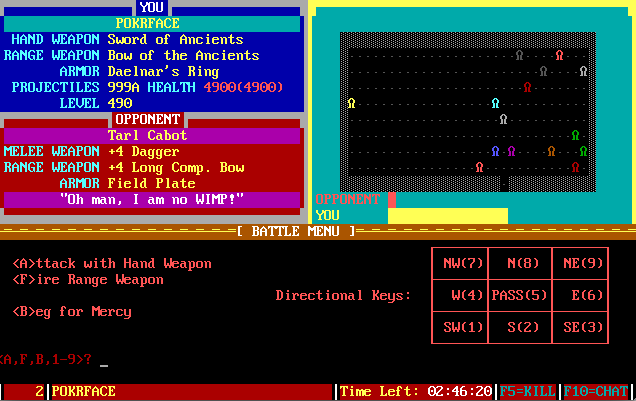
You've almost certainly never seen the place where I grew up, and you never will because it's long gone, buried by progress and made unreachable by technological erosion and the fine grind of time. What I did and learned there shaped me, but that knowledge is archaic and useless—who today needs to know the Hayes AT command set, the true baud rates of most common connection speeds, or the inner secrets of TheDraw? I am a wizard whose time has passed—a brilliant steam engine mechanic standing agape in the engine room of the starship Enterprise.
I am a child of the BBS era. BBSs—that's "Bulletin Board Systems"—were sort of the precursors to the modern Internet, though that's not quite accurate, since the Internet evolved separately and in parallel. It would be more accurate to say that many people in their 30s and older today were introduced to the world of the Internet either through or because of the interlinked telephone universe of BBSs. That one experience begat the other.

BBSs existed in a world that had yet to be soiled by smartphones and Facebook and Instagram; there was no Google, and indeed no World Wide Web at all. Up until 1992, the Internet was a thing primarily of text, and BBSs in many ways mimicked that. To get "online" was to sit down at your computer, open up an application called a "terminal program" (or just "term program" for short), pull up your carefully hoarded list of BBS phone numbers, and start dialing. Inevitably, most would be busy and you'd have to wait, but eventually you'd be treated to the sweet sound of ringing through your modem's speaker, followed by the electronic beeping and scratching of a modem handshake.
Oh, there were multi-line BBSs which could host more than one user at a time, but I didn't spend much time at those—the truly popular ones almost invariably required membership fees to support the cost of so many phone lines. No, most BBSs consisted of a single computer at someone's house, connected to a single phone line, which users dialed into one at a time. That remote computer was typically dedicated to the BBS because in the 1980s and early 1990s, multitasking operating systems like we have today were less common and much more temperamental. So, one at a time, users would dial into the BBS, check their private messages, perhaps leave a message on the BBS' "wall" for later callers, read and leave public messages in the message boards (called "subboards" or just "subs"), download and upload files, and then log off. If a modern Web-based forum is a crowded dinner party full of guests all yammering at the same time, a BBS was an entire house that you had all to yourself—one where you could enter, spend some time relaxing and reading books in solitude, write some letters, and maybe rearrange the furniture a bit.
The one who was
I was 12 years old in the fall of 1990, full of bespectacled junior high awkwardness and hunting, as all preteens are, for identity. At the time, my father worked for a big savings and loan firm, and in order to be able to occasionally do some work from our home PC, he was loaned a Hayes Smartmodem—a heavy external box that connected to our Acer 286/12 desktop via a thick RS-232 cable. I truly don't know if my dad ever used the device for work, but once the thing was plugged in, my world changed.

It came with some janky business-oriented communications application—likely Bitcom, but it was a long, long time ago and I don't remember the exact name—which was preprogrammed with a big list of (useless, to me) access numbers for business services. Seeing how interested I was in the device, my dad got the IT folks at his job to write down a few local BBS numbers for me to dial into.
The first BBSs I called, courtesy of that list, were hosted on Commodore computers running the SpiceWare BBS hosting software. If you happened to be using a Commodore computer with a semigraphical term program, it was a colorful and sound-filled experience (there's a video on the linked blog post of what a SpiceWare BBS looked like). For me on my IBM-compatible PC without even ANSI graphics, all I remember is a lot of red text.
I didn't care. It was absolutely incredible. It was like the computer in front of me had gained another dimension—it had become TARDIS-like, suddenly containing far more than its physical dimensions seemed to be able to allow. My computer could talk to other computers, and it felt like the boundaries of the world had just been blown out, like a cardboard box stuffed with dynamite. After I registered for an account on that first BBS, the remote system's menu showed me cryptic but exciting things I could do. Post messages? Download files? Play door games? Chat with the sysop? What's a sysop?
Learning the lingo
When it came down to it, there were three major activities one could do on a BBS: read and post messages, upload and download files, and play games. I quickly came to realize that me being on an IBM-compatible system meant that the files on these Commodore-hosted BBSs were useless to me, but I immediately fell in love with the message subboards. People were talking to each other! Inside the computer! And I could talk to them! And they would sometimes talk back!
These weren't multi-line BBSs, though, so the communication was very much serial. You'd call in, check your private messages to see if anyone had left you any, maybe take a peek at the public "wall" to see if anyone had scrawled anything funny, then flip over to the subboard of your choice and check for new posts there. For me, this was all done in text, though for Commodore users there were colors, semigraphics, and even sounds.
A "sysop," I quickly found out, was short for "system operator"—the person who ran the BBS. The sysop had administrative power and could do anything. On some BBSs they were jovial benefactors; on others, they were message-editing, power-abusing tyrants.
"Door games" were games that could be played through the BBS's text interface. They ranged from simple things (like maybe a Blackjack game) to deep, rich, complex simulations like Tradewars 2002. They were called "door" games because they were usually self-contained external applications, and the BBS application accessed them through an interface colloquially called a "door."

For most BBSs, the message subboards were the main reason people called in, and many BBSs tried to keep users active in those boards by enforcing a "PCR"—that is, a "post/call ratio." Users who wanted to download files had to post a certain number of messages in the subboards to keep their PCR up in order to be given access to the files areas. This often backfired, with some people posting useless "Post to get my PCR up!" type messages. On the other hand, you didn't want people hogging the board up, so users could only call in for a limited amount of time each day—often an hour. You could also bank your extra, unused time, sort of like rollover minutes. If you were done with a board for the day after only 20 minutes, you could stuff the other 40 into your time bank and use it later.
And the files—oh, the files. Once I started calling IBM-PC boards instead of Commodore-hosted boards, the files sections started to get more and more interesting. BBSs had different kinds of files depending on what the sysop wanted to do with his or her BBS; some boards had lots of programs to download and run, like screensavers or graphical demos, while some focused on amassing and distributing tremendous libraries of text files. It was rare to find a board without an ASCII copy of The Anarchist's Cookbook; the Cult of the Dead Cow or SubGenius texts were also heavily traded.
There were three other things you might see in a BBS's file area as well, and they were all weirdly linked together—ANSI art, MOD files, and warez. But before I could find out about any of those things, I had to escape from Commodore BBSs and start dialing into PC-run boards.
Reader Comments (440)
View comments on forumLoading comments...